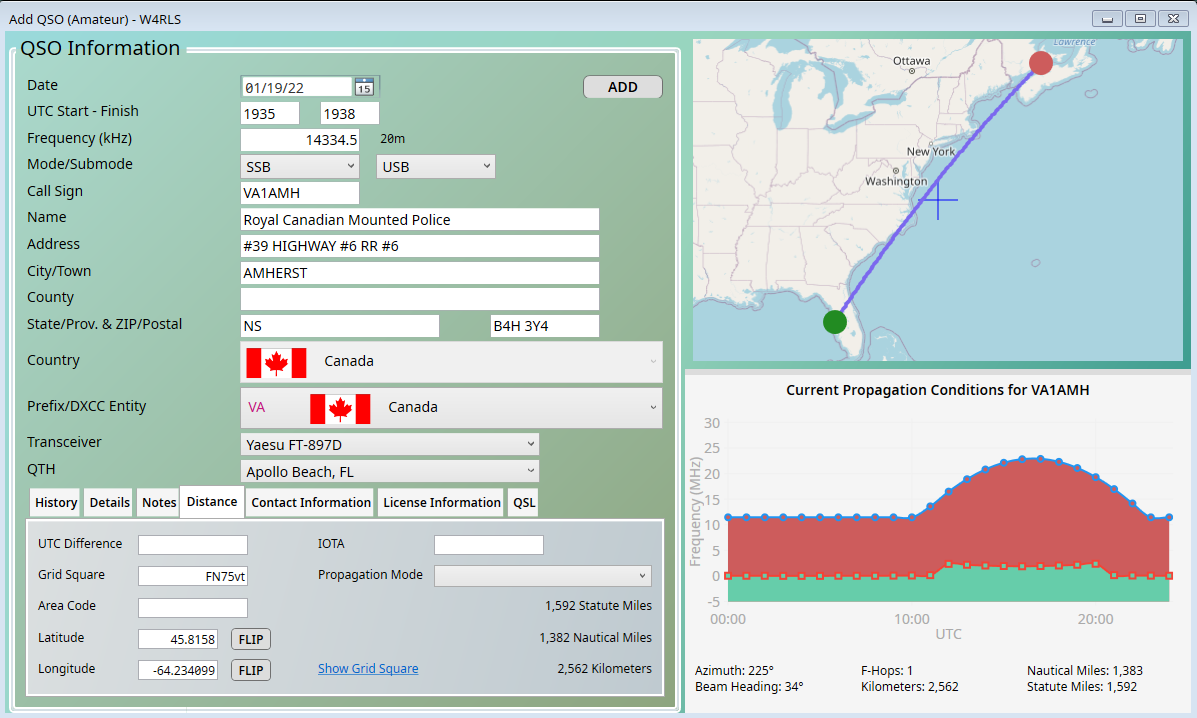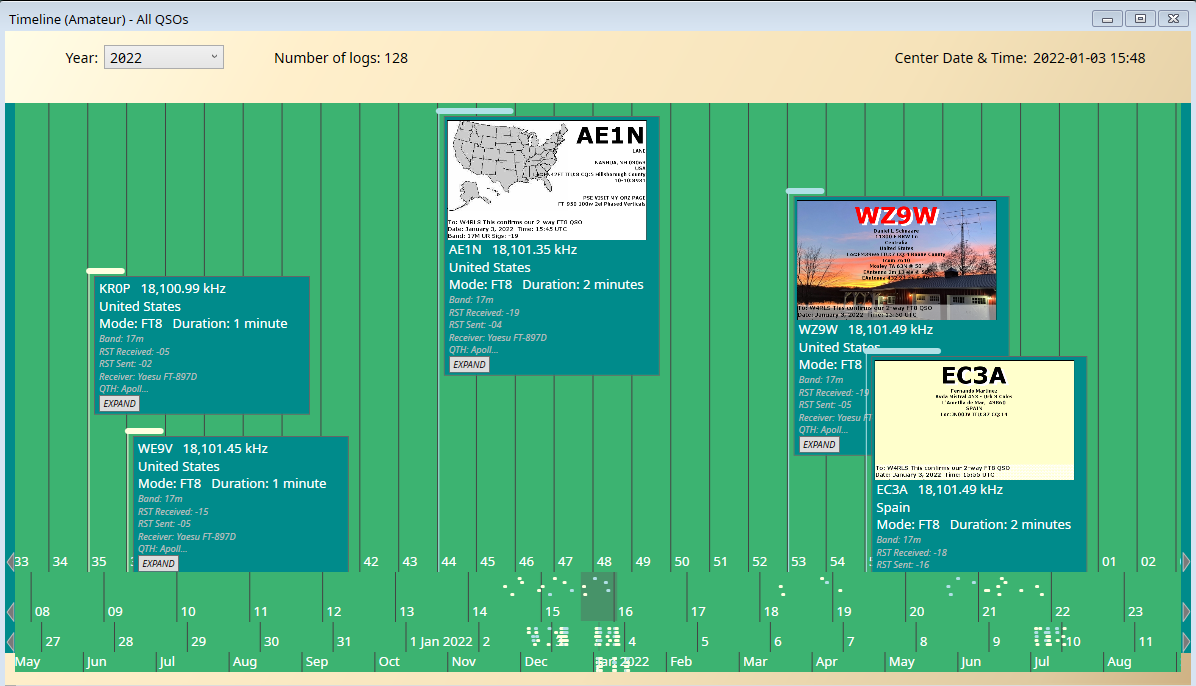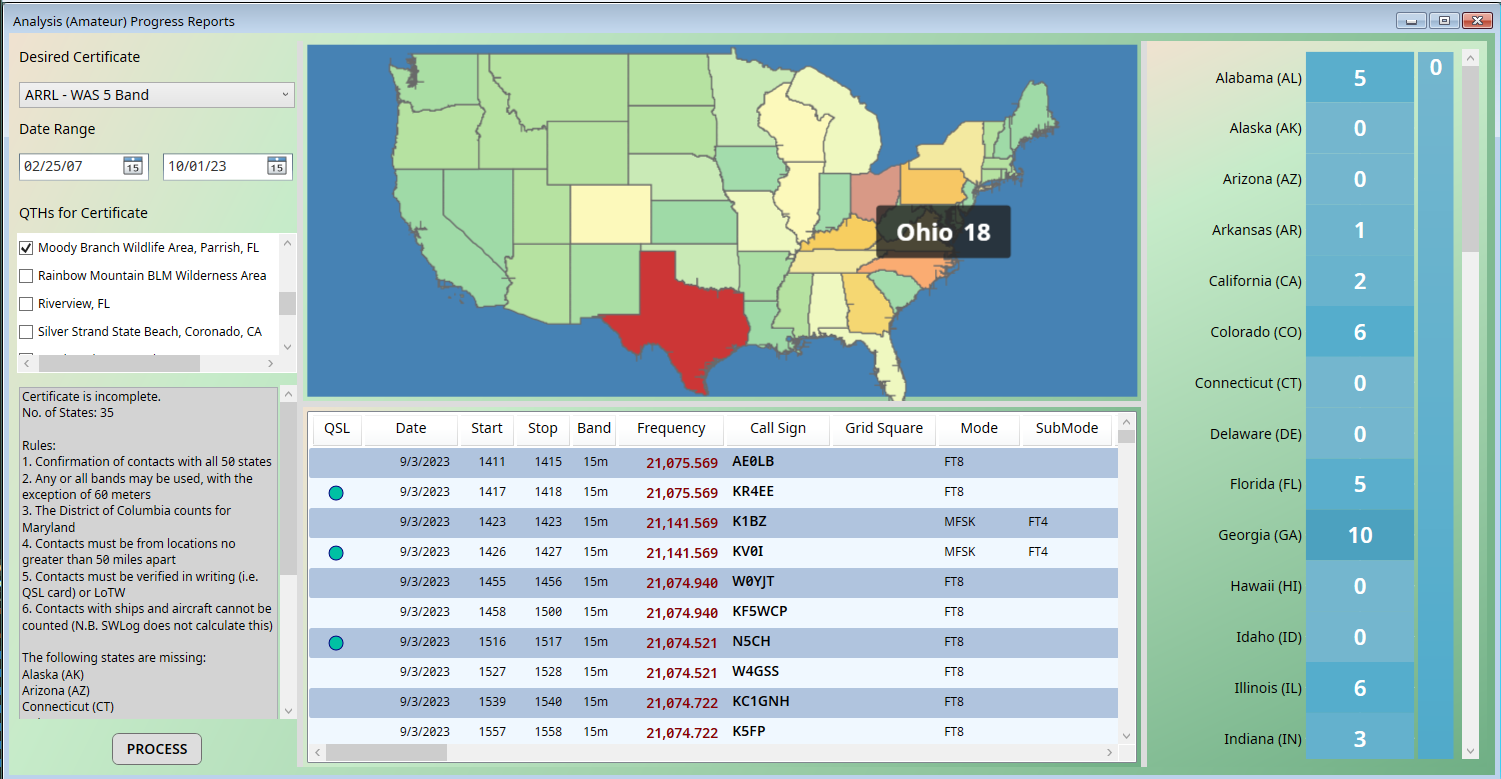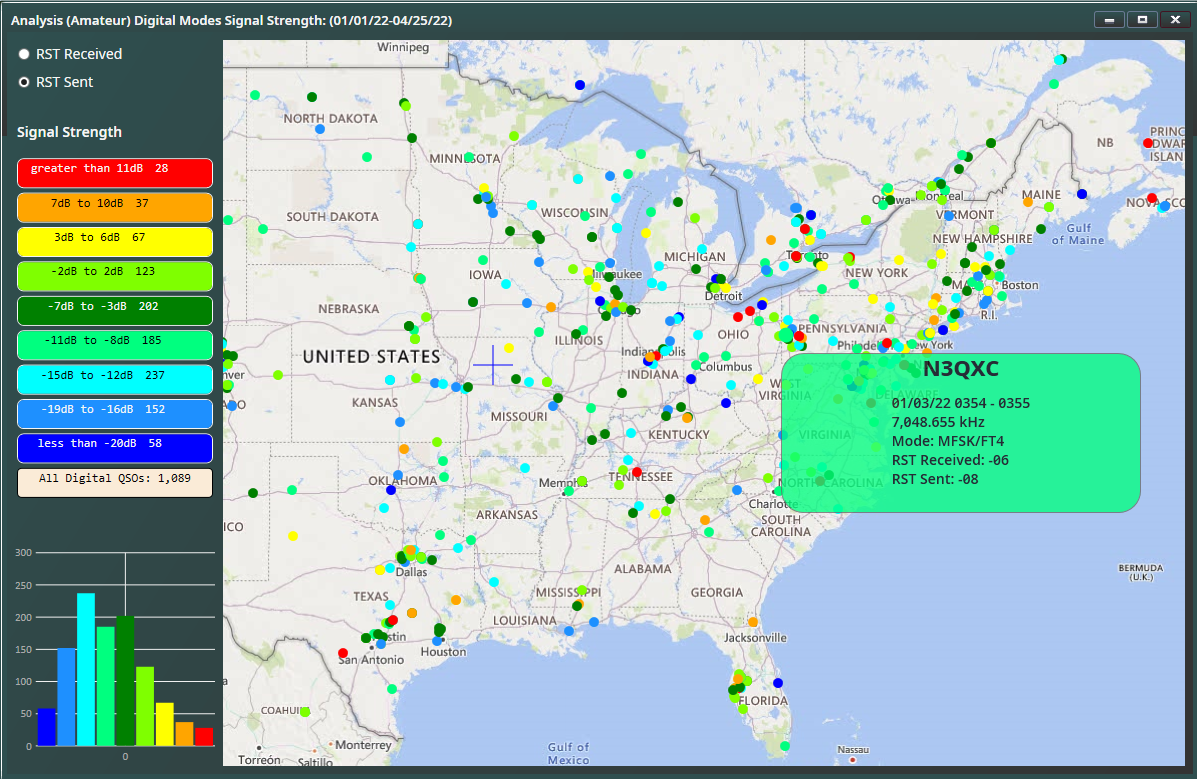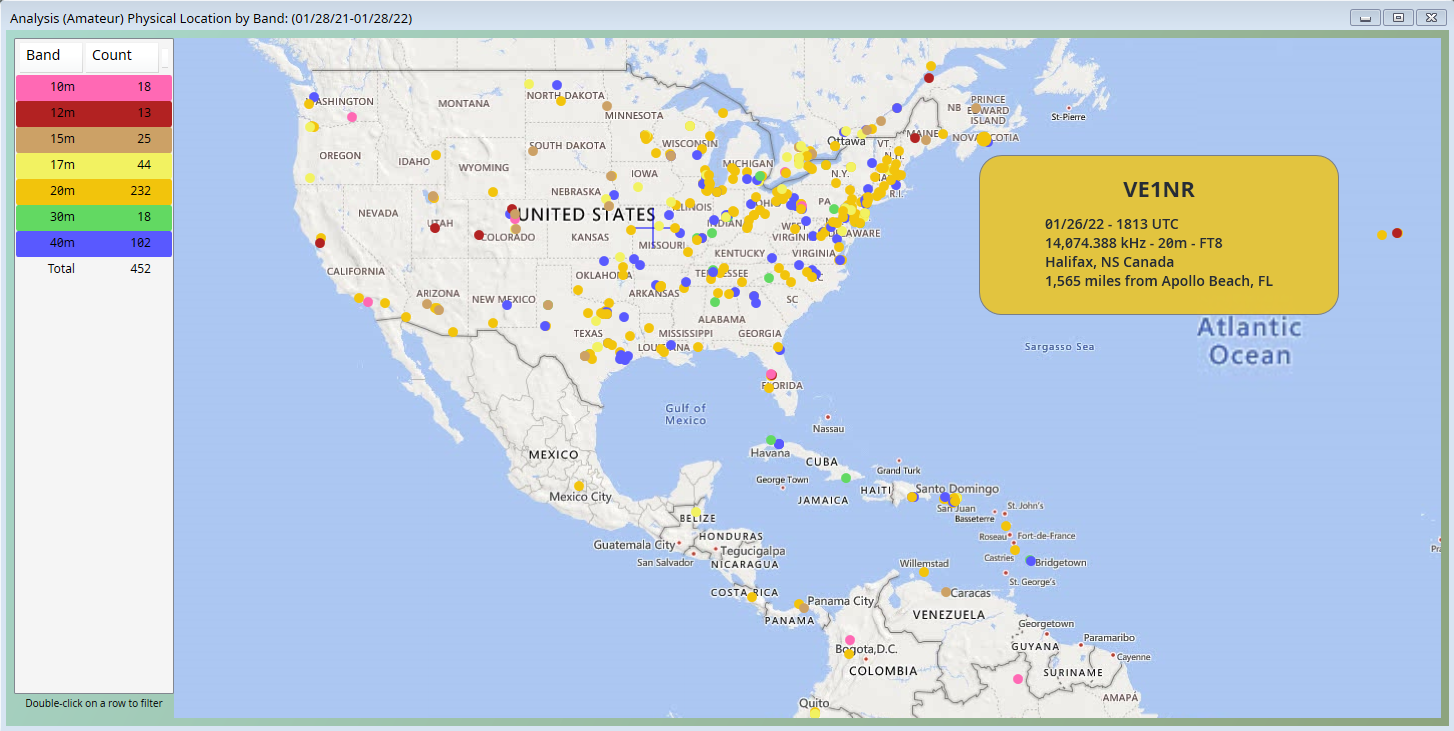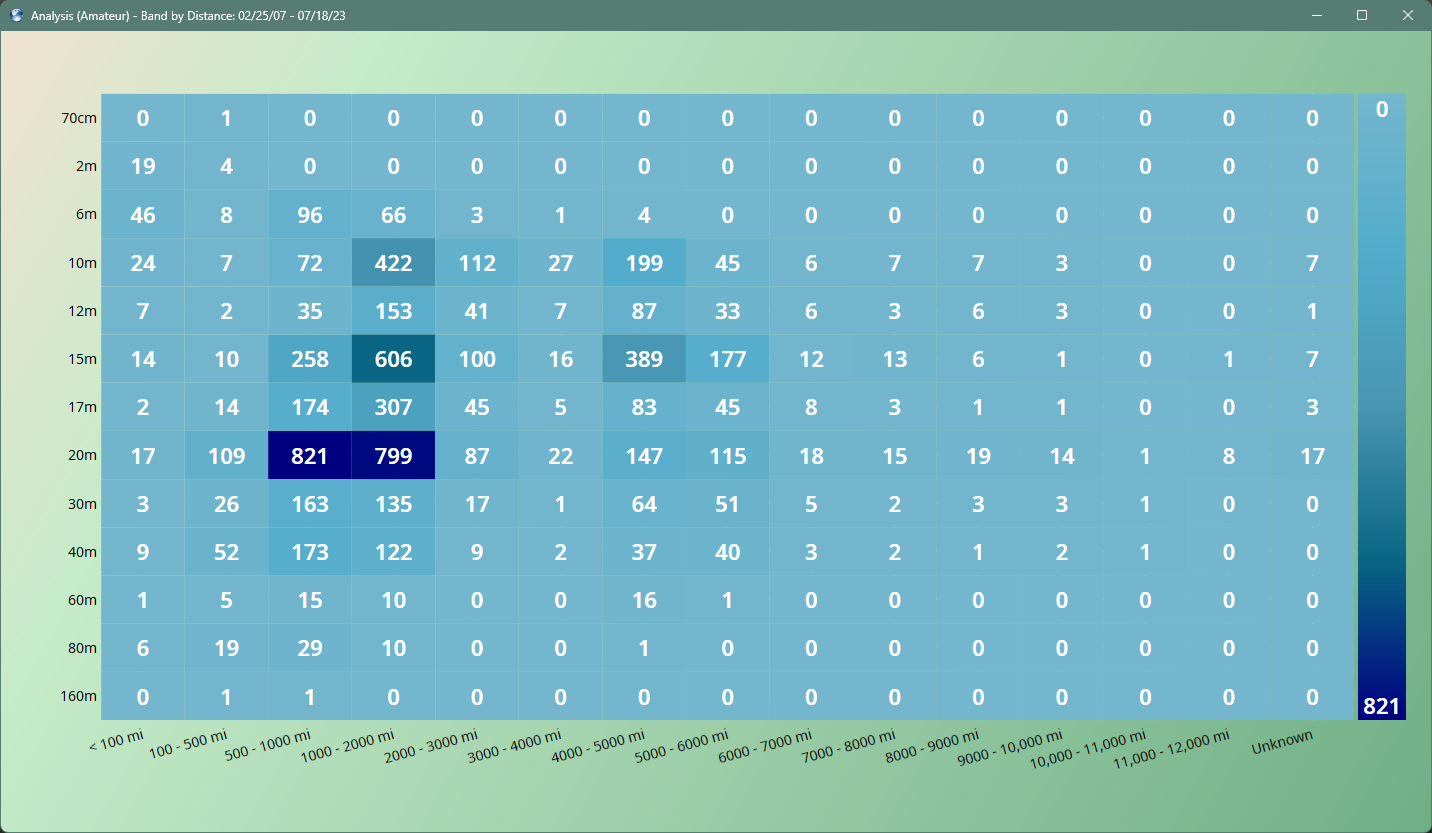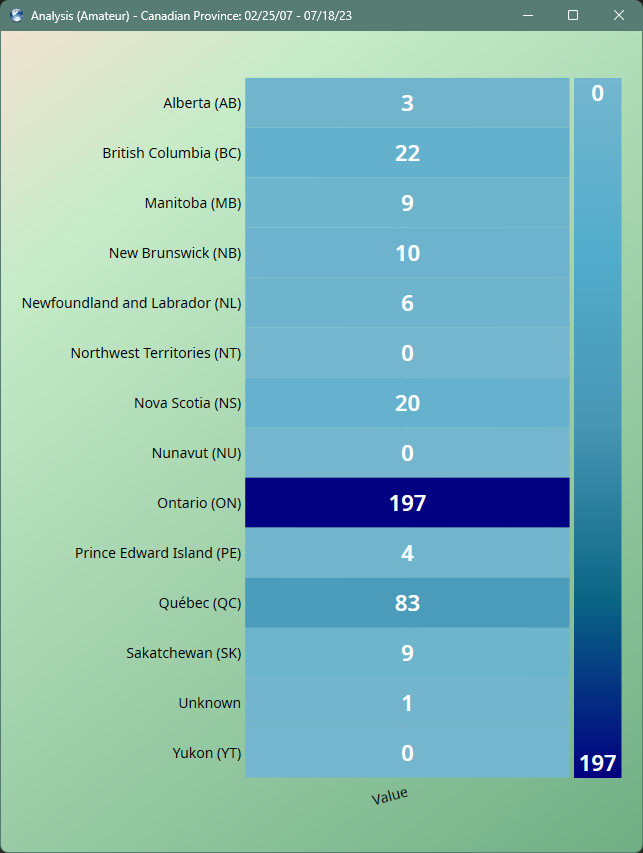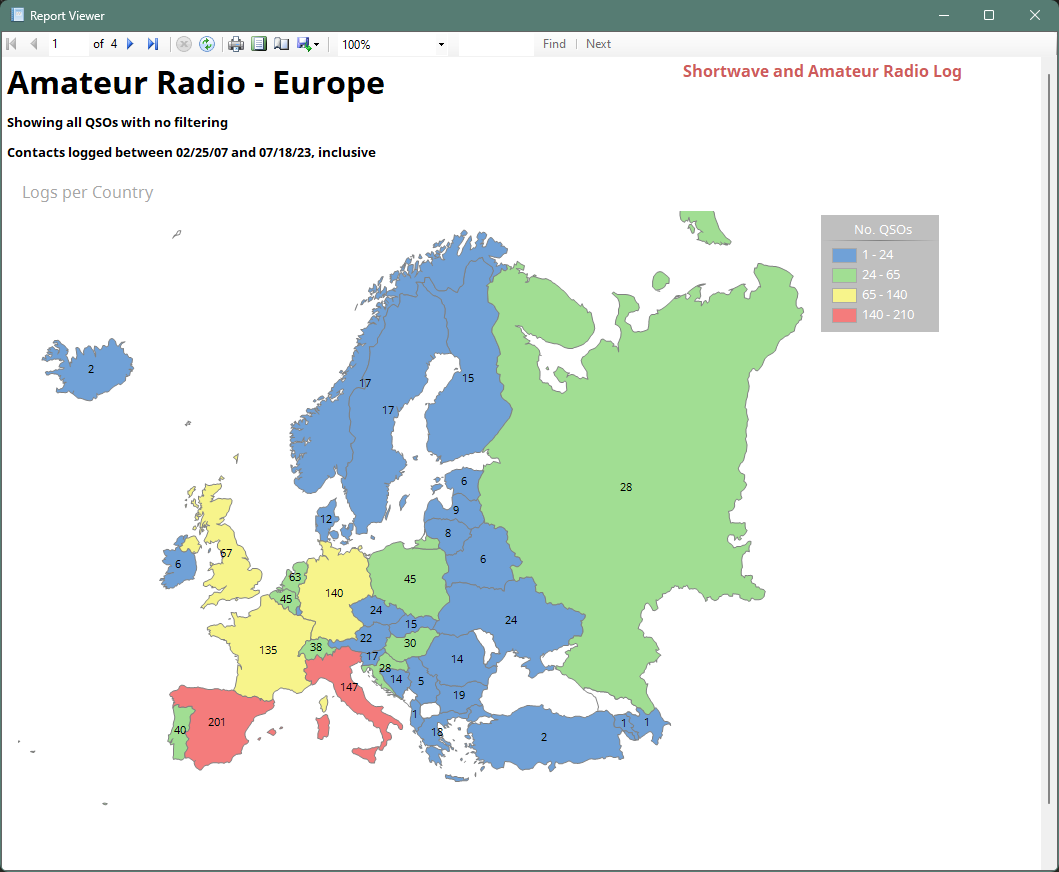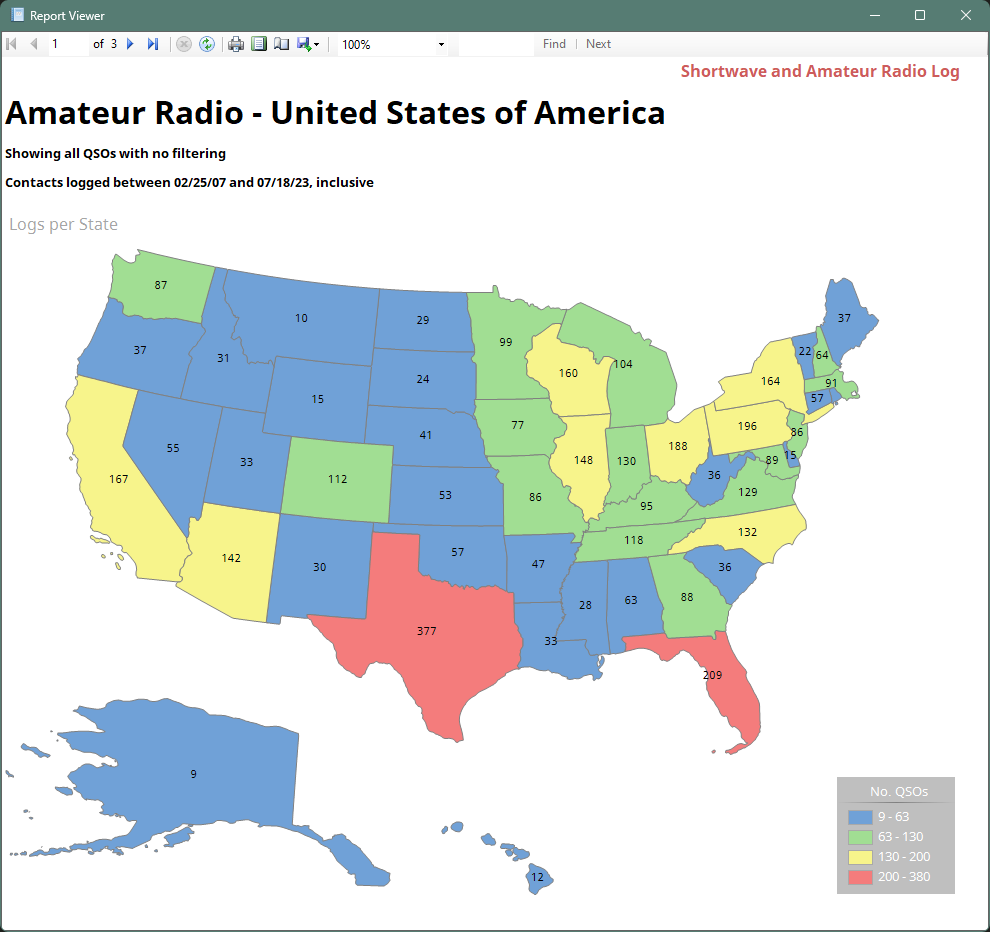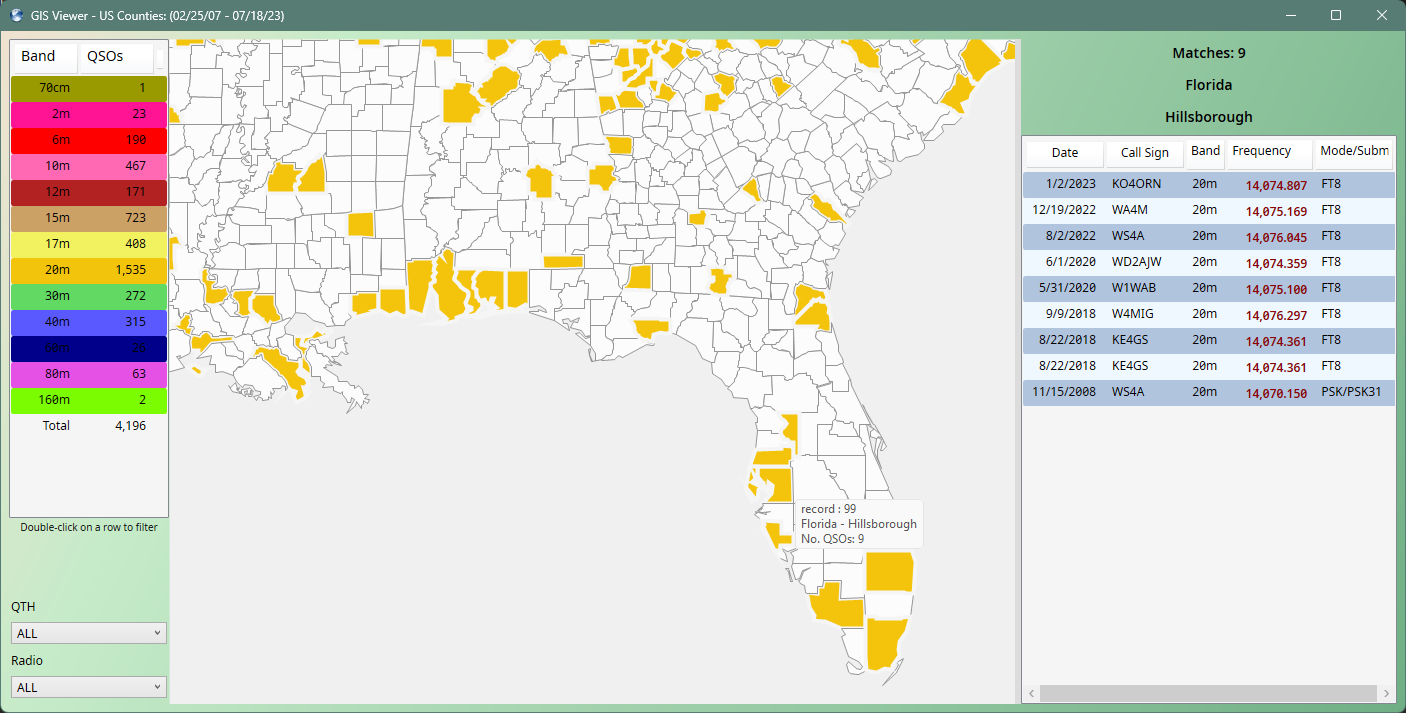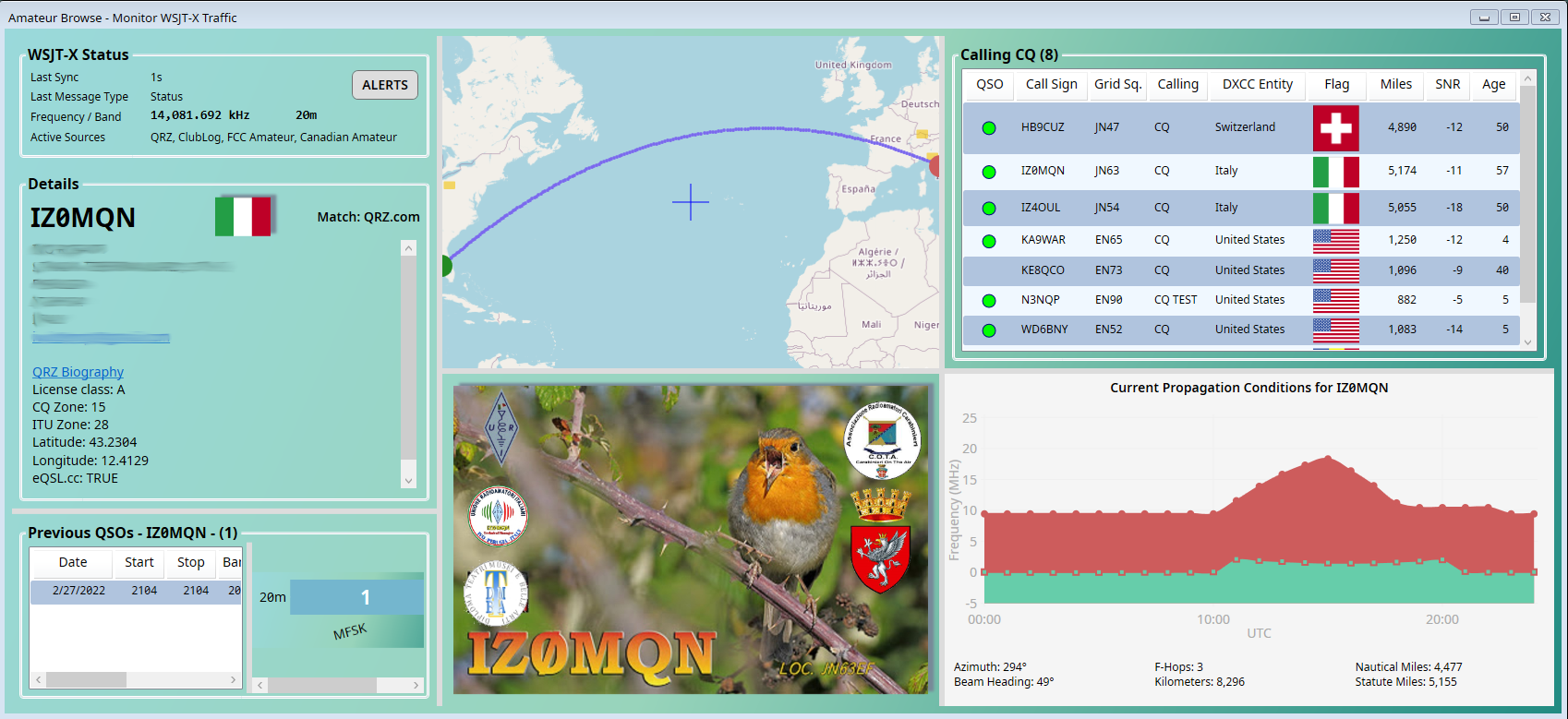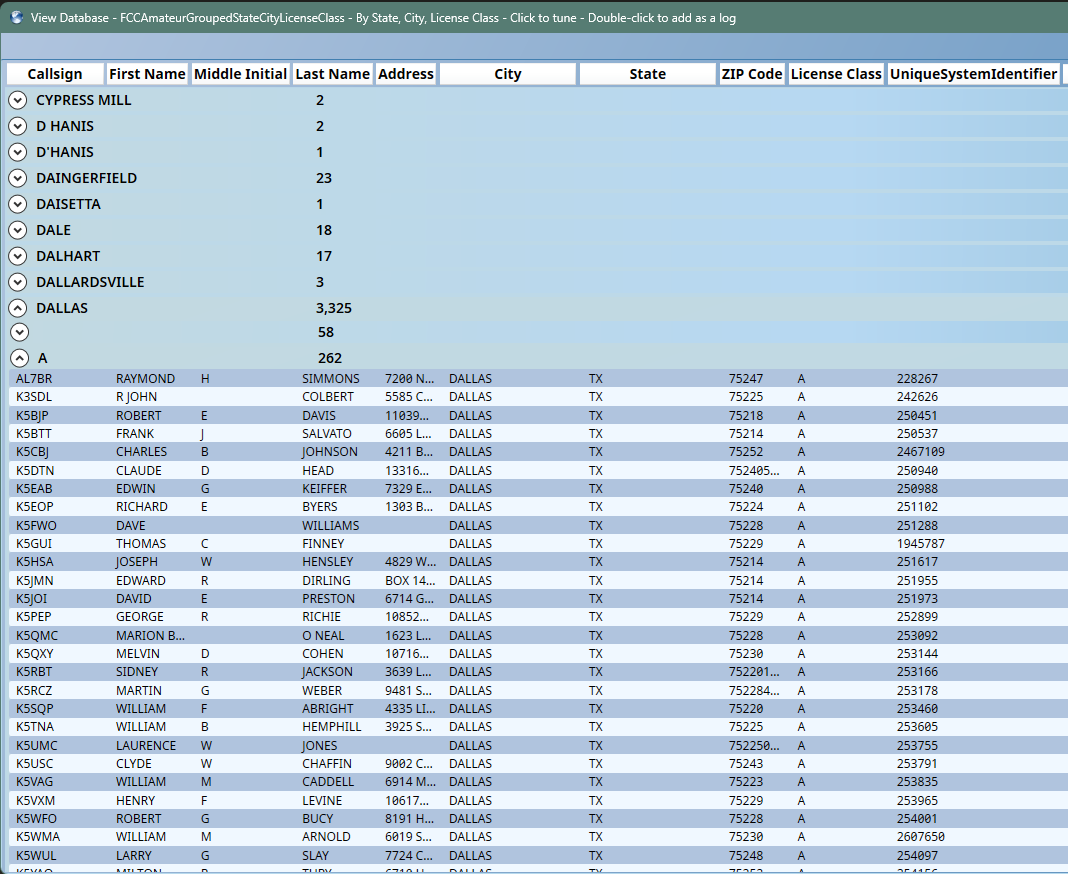Amateur Radio Logging
Amateur radio logging is extremely data focused. Given the plethora of logging programs, it is surprising that few focus on the underlying data underlying structure. In SWLog all data is stored in a relational database (Microsoft SQL Server), thus providing enterprise-grade data capabilities.
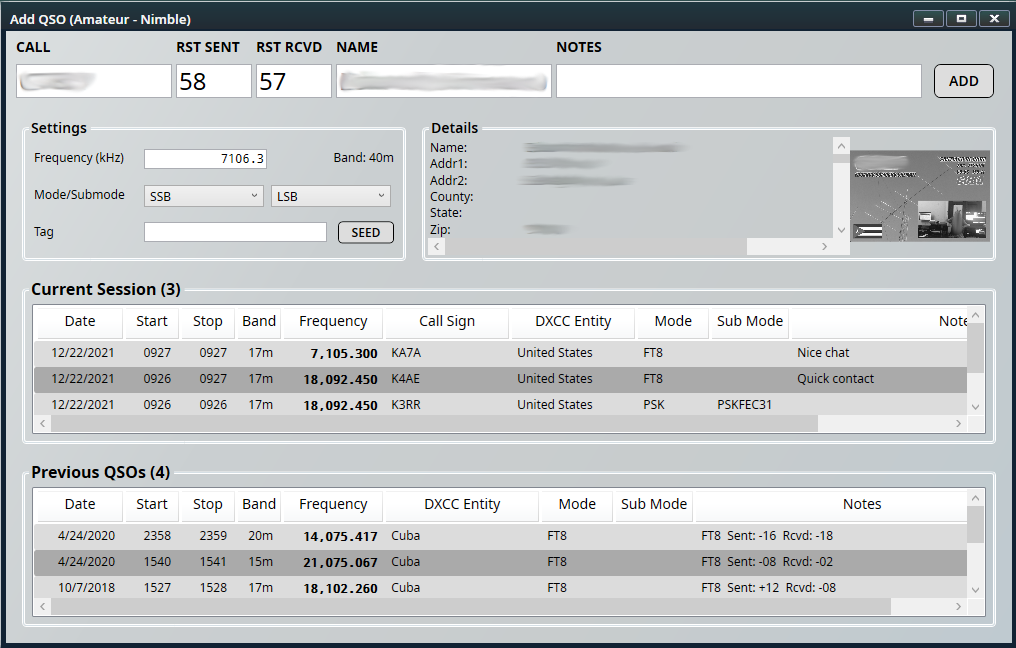
Add Log (Nimble)
Nimble is a more streamlined form that seamlessly integrates with the Radio Control (Desktop) or the Radio Control Server applications to keep the frequency aligned as the radio is tuned. Full detail lookups to QRZ.com or the downloaded FCC Amateur or Canadian Amateur databases will automatically populate details based upon the call sign.
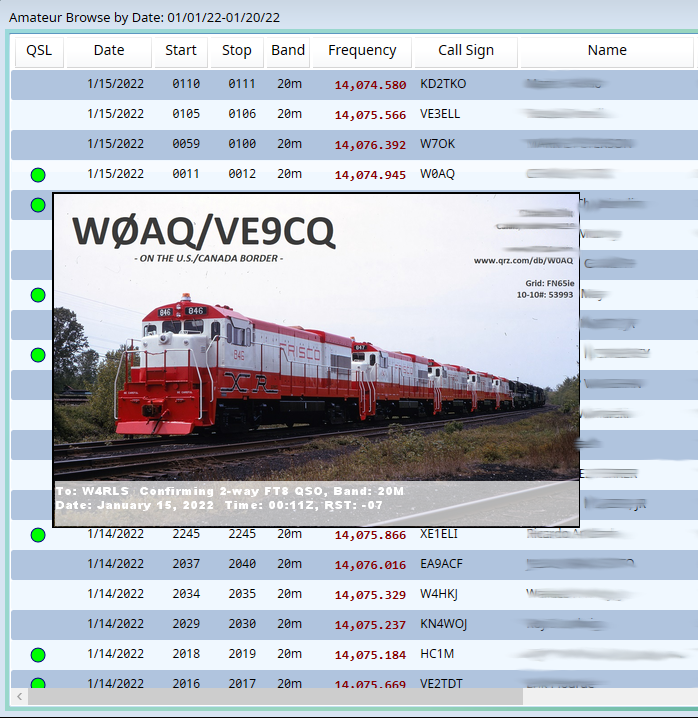
Browsing Logs
When browsing logs, the logs can be viewed flat or grouped by various columns, like this example where the logs are grouped by country. If there is a QSL card that has been processed locally (i.e. a scan of a physical QSL card) or downloaded form eQSL.cc, it will be dynamically displayed in-line. While this data isn't technically PII as it is publicly available, the names and addresses have been blurred as there is no reason to show that data.
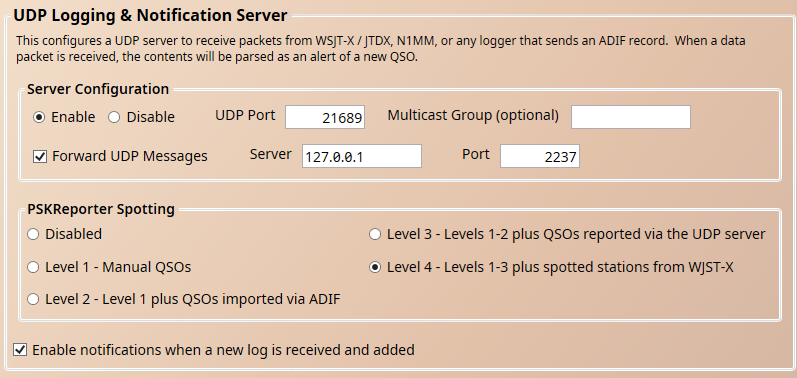
UDP Server
The UDP Server can receive QSO packets from WSJT-X and variants plus N1MM or any logger that sends ADIF packets. Additionally broadcast and status packets from WSJT-X and variants are received and processed. Included is the ability to forward the UDP packets to another program and to PSKReporter.
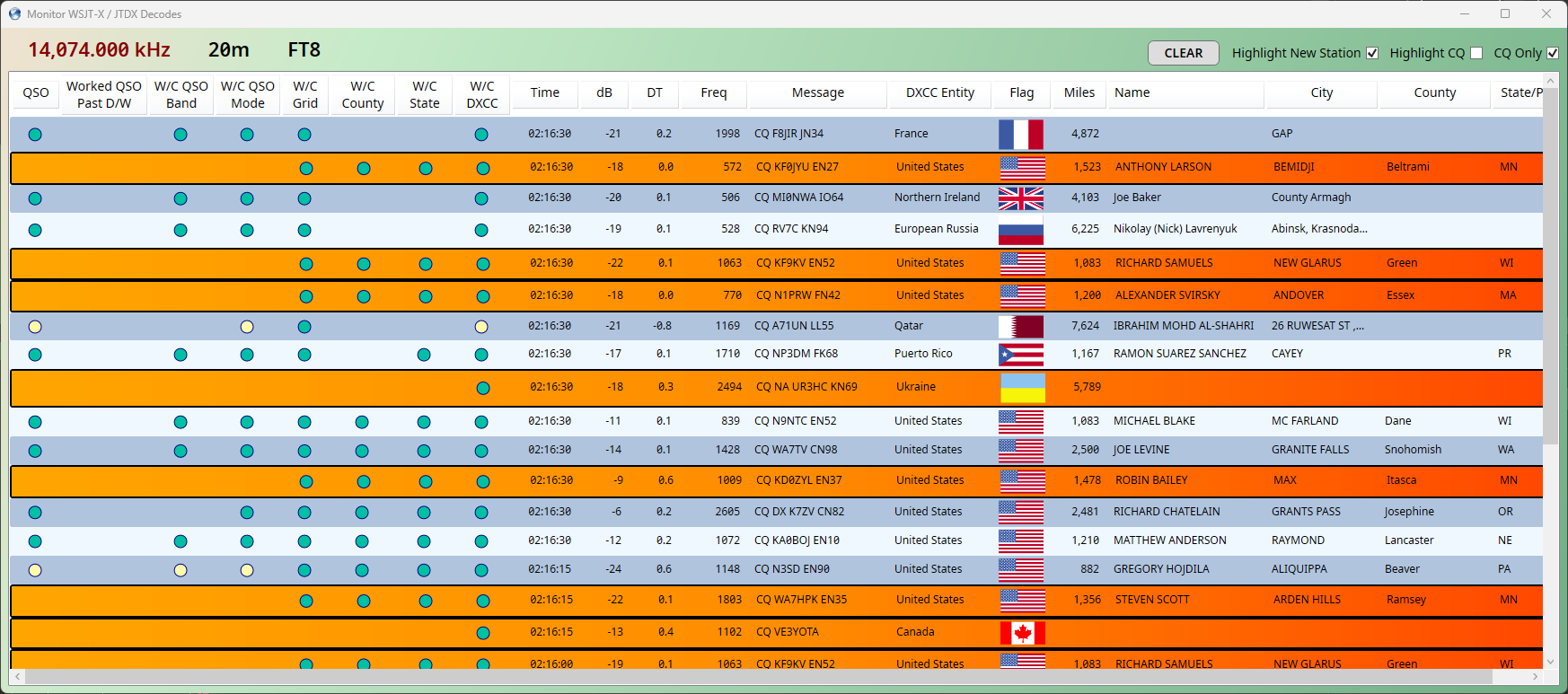
WSJT-X Traffic
The decoded UDP packets from WSTJ-X can be viewed with specific log-centric details
- QSO worked/confirmed
- QSO in the past day or week
- QSO worked/confirmed on band
- QSO worked/confirmed with mode
- Grid square worked/confirmed
- US County worked/confirmed
- US State or Canadian Province worked/confirmed
- DXCC Entity worked/confirmed

